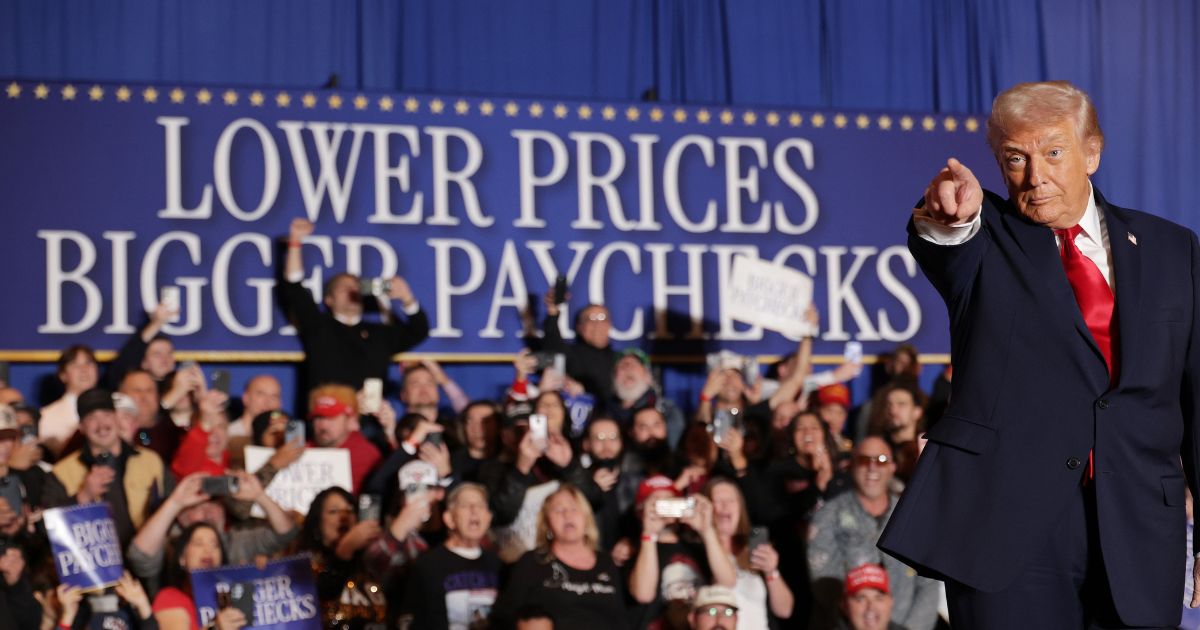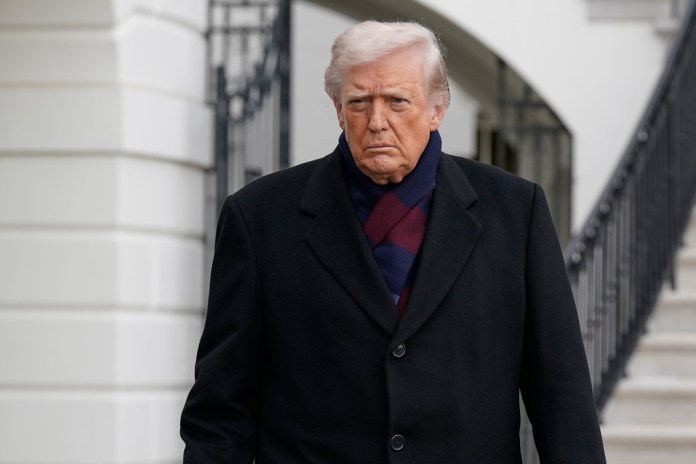Trump puts 25% tariffs on steel and aluminum imports – Washington Examiner
President donald Trump has announced the implementation of new tariffs, raising levies on steel and aluminum imports to 25% while fully removing any previous exemptions. This decision, according to Trump’s trade advisor Peter Navarro, aims to curb foreign dumping, boost domestic production, and reinforce the U.S. steel and aluminum industries, which are deemed crucial for the nation’s economic and security health. Senior White House officials have criticized the Biden governance for issuing numerous exemptions under Trump’s earlier tariffs, leading to reduced production in these industries.
The full enforcement of the new tariffs is expected to begin in early March to accommodate shipments already in transit.Alongside the steel and aluminum tariffs, Trump is expanding them to include key downstream products and has stopped the product exclusion process. White house officials assert that these measures are a response to the negative impacts of previous trade policies, particularly those under the Biden administration, which they claim allowed foreign manipulation that adversely affected American industries.
Additionally, Trump has previously imposed tariffs on Chinese imports, which resulted in retaliatory tariffs from China on U.S. energy and automotive products. Trump views tariffs not only as a means to protect American jobs but also as strategic tools in foreign relations,with discussions hinting at potential tariffs on Arab nations that do not comply with U.S. requests regarding Palestinian refugees.
The announcement of the new tariffs has had a notable effect on financial markets, initially causing declines in major stock indexes, but subsequently leading to increases as Trump’s threats regarding reciprocal tariffs gained traction.
Trump puts 25% tariffs on steel and aluminum imports and ends product exclusion process
President Donald Trump signed off on new tariffs on Monday expanding levies he placed on steel and aluminum imports during his first term in office to 25% and eliminating all previous exemptions to the taxes.
Peter Navarro, Trump’s top trade advisor, said Trump’s tariffs will “put an end to foreign dumping, boost domestic production, and secure our steel and aluminum industries as the backbone and pillar industries of America’s economic and national security.”
Senior White House officials briefing reporters on the president’s actions ahead of the White House signing ceremony of the new tariffs claimed that the Biden administration granted “hundreds of thousands of exemptions” to Trump’s 2018 metals tariffs, resulting in plummeting utilization rates despite a boost in domestic production.
FULL LIST OF EXECUTIVE ORDERS, ACTIONS, AND PROCLAMATIONS TRUMP HAS MADE AS PRESIDENT
“The net result has been really very difficult times” for American steel and aluminum production, one White House official said.
A second White House official noted that full implementation of the new tariffs won’t kick in until early March to ensure that shipments already en route to the United States will not be subject to the new tariffs.
The White House says Trump is expanding the tariffs to “include key downstream products, including fabricated structural steel, pre-stressed concrete strand, and similar types of products in the aluminum industry, like extrusions” and is “ending completely” the product exclusion process.
“President Trump’s bold action restores the strength of America’s steel and aluminum industries and puts an end to the rampant exploitation and circumvention that has hurt American workers,” a senior White House official said. “The Trump 2.0 tariffs are a direct response to the failed policies of the Biden, administration, which allowed, China, Russia, and many of our allies like Canada, Mexico, Brazil, and the EU to manipulate trade and cripple US industry.”
Just one week prior, Trump placed 10% tariffs on Chinese imports to the U.S. the previous week. Beijing responded by placing tariffs on American energy products, including 15% levies on liquefied natural gas and coal and a 10% tax on oil. China also placed tariffs on American automobiles and rare earth minerals.
Trump had previously announced 25% tariffs for Canadian and Mexican imports but delayed implementation for a month after reaching agreements with Canadian Prime Minister Justin Trudeau and Mexican President Claudia Sheinbaum to address border security and the drug trade.
White House aides have suggested Trump may place additional tariffs on Arab countries that refuse his request to resettle Palestinian refugees as Israel and Hamas continue progress toward ending the Gaza war.
“I think President Trump views tariffs as a key tool for our foreign policy,” National Security Advisor Mike Waltz told the Washington Examiner last Wednesday, just one day after the president announced his plans for a U.S. take over of Gaza following the war.
Over the past two weeks, top White House aides have appeared to be playing catch on Trump’s public tariff comments, resulting in some disagreement about the actual strategy behind the push.
TRUMP MIGHT USE TARIFFS TO FORCE ARAB COUNTRIES TO ADMIT PALESTINIAN REFUGEES
Navarro had previously told reporters that the president’s tariff threats were part of a “drug war,” not efforts to re-negotiate favorable trade agreements, but Trump himself threw that thinking out the window in the ensuing days by confirming his intent to place “reciprocal tariffs” on countries that tax imports from the U.S.
“If they are charging us 130% and we’re charging them nothing, it’s not going to stay that way,” the president told reporters flying on Air Force One Sunday, adding the reciprocal announcement would be made on Tuesday or Wednesday.
Kevin Hassett, the director of Trump’s National Economic Council and former chairman of the Council of Economic Advisors during Trump’s first term in office, told the Washington Examiner Monday morning that the president had flirted with the idea of instituting reciprocal trade policies for years.
“The president’s talked about reciprocal tariffs since I first met him in 2017,” Hassett told the Washington Examiner Monday morning. “He thinks that it’s not fair that we have trading partners that charge tariffs two or three times what we charge.”
Meanwhile, Jamieson Greer, Trump’s nominee to be the United States Trade Representative, claimed during his Senate confirmation hearing on Thursday that Trump’s tariffs are focused on both American trade imbalances and combating the fentanyl trade in the Western Hemisphere.
“We have a lot of trading partners like this that enjoy very substantial trade access in the United States, and we don’t have reciprocal access going the other way,” he stated. “For me, this is a huge problem.”
Peter Loge, the director of the Project on Ethics in Political Communication and a professor at George Washington University, argued that Trump’s tariff agenda isn’t providing new leverage in negotiations with foreign leaders.
“He makes grand statements and gets in return what was probably going to happen anyway. He lifted threatened tariffs against Mexico after the Mexican president pledged to move 10,000 troops to the U.S.-Mexico border, which was fewer than the 15,000 troops she already deployed,” he told the Washington Examiner. “The big get from Canada was to give someone a title and a promise to pay attention. In many ways this is a continuation of the first administration in which there was much more flash than bang.”
Trump’s allies on Capitol Hill have taken steps to help the president advance his tariff agenda. Rep. Riley Moore (R-WV) introduced the Reciprocal Trade Act, legislation that would allow Trump to unilaterally place equal tariffs on other countries that tax American exports. The president has said he would sign the Reciprocal Trade Act into law.
Whatever their aims, Trump’s pursuit of tariffs have had a signficant impact on financial markets.
The S&P 500, Dow Jones Industrial Average, and Nasdaq composite all fell at open last week after Trump confirmed his plans for new tariffs on Canadian, Chinese, and Mexican products.
Still, Trump’s threats of reciprocal tariffs over the weekend drove stocks up Monday morning, with gold, the U.S. dollar, and tech and steel funds all seeing a bounce.
" Conservative News Daily does not always share or support the views and opinions expressed here; they are just those of the writer."




